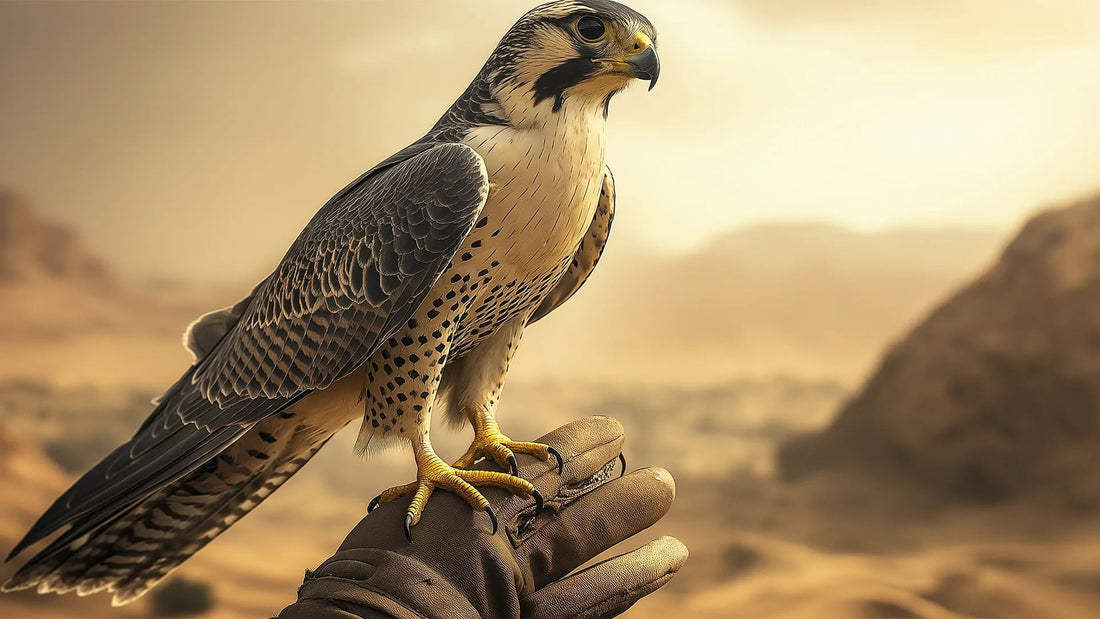
Things you need to know about falcon breeding
Share
Falcons are birds of prey that are of great importance in Arab culture, yet these birds face the threat of extinction, so it is necessary to provide health care and a suitable environment for their breeding in accordance with legal and environmental standards.
It should be noted that there are multiple types of falcons, such as the free falcon, the peregrine and the lime, and each type has its own needs and behavior, so when deciding to breed the falcon, it is necessary to choose the appropriate type according to experience and the ability to care, and the following is a summary of the most important things to know about falconry:
Obtaining a falcon: strict legal requirements
The only legal way to acquire a falcon in some countries is through specialized centers, and if the bird is coming from outside the country, the CITES certificate must be obtained, which is an international agreement for the protection of endangered species of wild fauna and flora, so it is necessary to review local laws and obtain the necessary permits before acquiring a falcon.
Housing design: strict health and safety standards
Falcon dwellings are subject to strict standards that ensure the comfort and safety of the bird, as commercial bird cages cannot be used to house these raptors, but special facilities must be established that meet legal requirements, and are subject to inspection and approval from the competent wildlife authorities before receiving any falcon.
The typical dwelling for falcons consists of two parts; an internal part with dimensions of at least 2.4 meters in each direction, with an entry door, and a window on the east or south side to ensure ventilation and sunlight, and these dimensions may vary slightly depending on the size and type of falcon.
The outer part should be wide enough to allow the tethered falcon to try to fly without hitting its wings against the sides or the roof, and strong and stable parking spaces should be provided in both parts to enable the bird to stand safely.
Temperature and humidity control: an essential pillar in falconry
It is necessary to control temperatures and humidity in falconry areas to ensure their health and survival, as falcons, known for their visual sharpness and high speed in swooping, need carefully organized environments to grow, and it is noteworthy that high humidity negatively affects the survival rate of falcons, especially during the breeding stage.
To meet these challenges, specialists recommend maintaining a temperature of 3-4 degrees Celsius, humidity at 35% with a margin of variation of up to 5% plus or minus.
Balanced nutrition: a necessity for the health of falcons
Balanced nutrition is essential to care for falcons and keep them healthy and energetic, so a variety of foods rich in proteins and nutrients can be introduced.
It is preferable that the falcon's diet contains raw meat similar to what it may catch in the wild, and if this is not possible, frozen mice or quail can be served after thawing, and breeders are keen to provide these foods daily to ensure that the falcons' nutritional needs are met, which helps maintain their fitness and readiness for hunting at all times.
Water quality: a vital factor in the health of falcons
Falconers are keen to provide clean water continuously to birds, in addition to taking care of drinking utensils and feeding, by sterilizing them regularly and frequently, as this practice aims to prevent the growth of harmful bacteria that may negatively affect the health of falcons, which contributes to creating a healthy and ideal environment for their growth.
Regular medical care: to ensure the safety of falcons
Periodic medical follow-up of falcons is also important, as experts recommend conducting between 8-10 medical examinations per year for each falcon, and these examinations are distributed throughout the year, with a focus on certain periods, such as conducting the first examination at the beginning of the hunting season or when acquiring a new falcon, and it is recommended to conduct another examination at the end of the hunting season, i.e. around October.
These regular check-ups contribute to the early detection of health problems that the falcon may face, allowing them to be treated in a timely manner, and maintaining the bird's performance at its best level.
Training Steps: Building Confidence and Skills
The trainer has to gain the trust of the falcon first, as these wild birds require a lot of time and effort to build this relationship, so it is useful to keep the falcon at home during the first weeks until it gets used to the presence of the trainer.
Food is the main stimulus to which the instincts of falcons respond, so the falcon must be able to jump or fly to the hands of the trainer to get food, and then he is taught to fly farther to develop his muscles and strengthen his abilities, by placing an attractive bait in a kite for the falcon to fly behind it, and it is important to put a transmitter on his leg before starting training to avoid losing it.
Necessary tools: ensuring safety and protection
Falcon training requires a lot of space, so trainers usually practice it in rural areas, and it must be ensured that health and hygiene requirements are met, and some basic tools are used to keep the bird and the trainer safe.
For example, a falcon's leather hat that covers his eyes helps keep him calm, the trainer's leather glove provides comfort to the bird and protects the trainer from claws, and leather ties are used to stabilize the falcon's legs so that the trainer can control it during its training.
In conclusion, falconry is an art with a long history in the Arab world, so caring for it should be a top priority for lovers of this traditional sport to preserve this rich heritage.
References
[1] avian-behavior.org, Seven Tips to Building Trust with Birds of Prey
[2] myanimals.com, How To Train a Falcon
[3] vetafarm.com.au, Hygiene Tips for Falcons
[4] animals.mom.com, How to Keep a Falcon
[5] falcon-breeder.com, falcon - breeder
Author:
آية يونس
